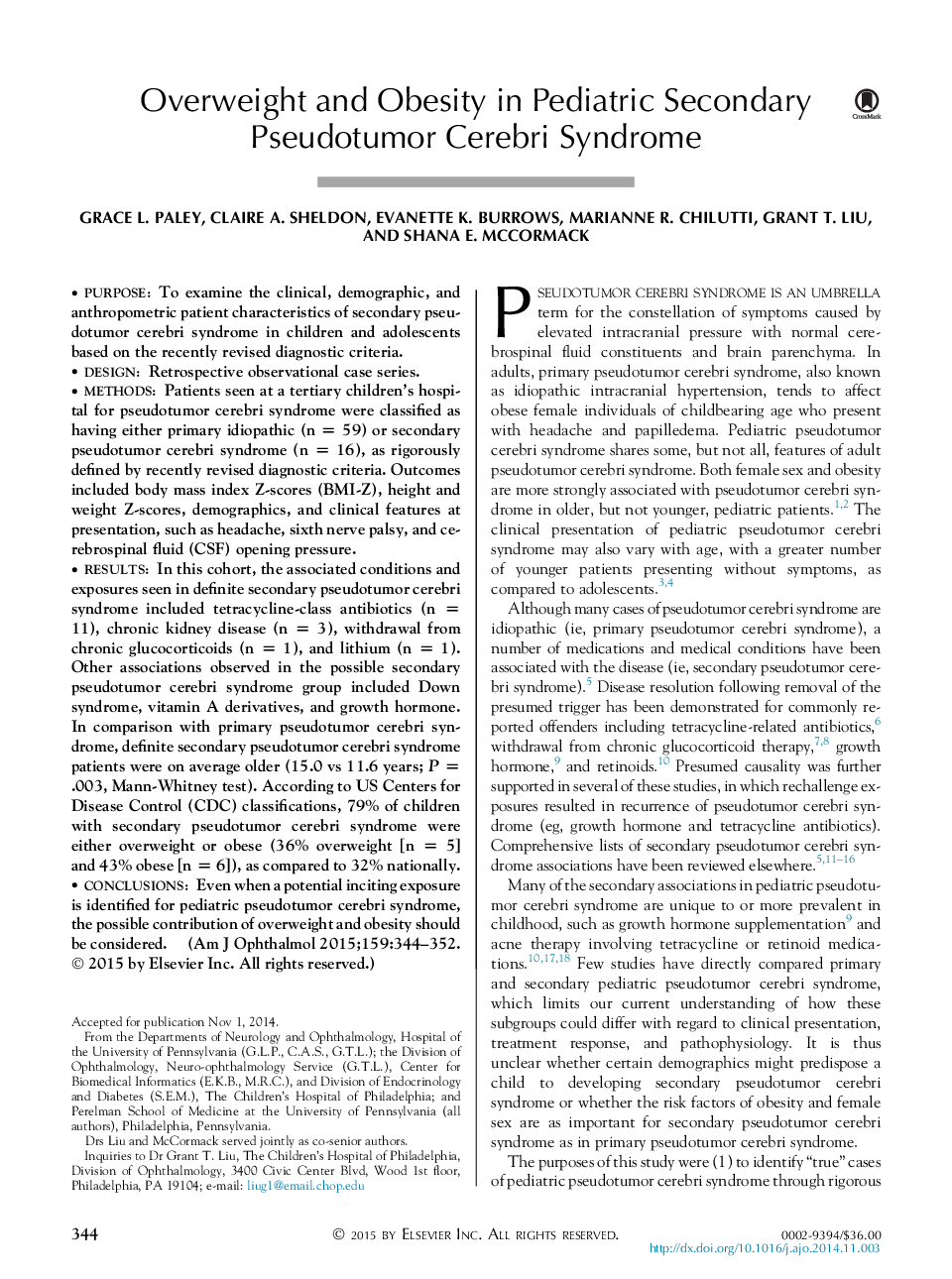| Article ID | Journal | Published Year | Pages | File Type |
|---|---|---|---|---|
| 6195649 | American Journal of Ophthalmology | 2015 | 10 Pages |
PurposeTo examine the clinical, demographic, and anthropometric patient characteristics of secondary pseudotumor cerebri syndrome in children and adolescents based on the recently revised diagnostic criteria.DesignRetrospective observational case series.MethodsPatients seen at a tertiary children's hospital for pseudotumor cerebri syndrome were classified as having either primary idiopathic (n = 59) or secondary pseudotumor cerebri syndrome (n = 16), as rigorously defined by recently revised diagnostic criteria. Outcomes included body mass index Z-scores (BMI-Z), height and weight Z-scores, demographics, and clinical features at presentation, such as headache, sixth nerve palsy, and cerebrospinal fluid (CSF) opening pressure.ResultsIn this cohort, the associated conditions and exposures seen in definite secondary pseudotumor cerebri syndrome included tetracycline-class antibiotics (n = 11), chronic kidney disease (n = 3), withdrawal from chronic glucocorticoids (n = 1), and lithium (n = 1). Other associations observed in the possible secondary pseudotumor cerebri syndrome group included Down syndrome, vitamin A derivatives, and growth hormone. In comparison with primary pseudotumor cerebri syndrome, definite secondary pseudotumor cerebri syndrome patients were on average older (15.0 vs 11.6 years; P = .003, Mann-Whitney test). According to US Centers for Disease Control (CDC) classifications, 79% of children with secondary pseudotumor cerebri syndrome were either overweight or obese (36% overweight [n = 5] and 43% obese [n = 6]), as compared to 32% nationally.ConclusionsEven when a potential inciting exposure is identified for pediatric pseudotumor cerebri syndrome, the possible contribution of overweight and obesity should be considered.
